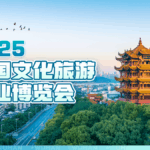Twenty years ago, the concept that “lucid waters and lush mountains are invaluable assets” was proposed in Anji, Zhejiang. Today, this scientific concept, shining with Eastern wisdom, is crossing mountains and seas, blooming with brilliant truth across the world. Looking at the grand picture of global ecological governance, Chinese theory is leading ideological transformation, reshaping development logic, and injecting spiritual motivation and providing feasible solutions for promoting the synergistic advancement of global protection and development. We invite experts and scholars to share their thoughts, insights, and visions on the enlightening significance of the “lucid waters and lush mountains are invaluable assets” concept for the transformation of global ecological governance.
Green “Belt and Road”
Empowering Green and Low-Carbon Transformation in Belt and Road Partner Countries
It was emphasized: “China promotes the construction of a green ‘Belt and Road,’ will continue to deepen cooperation in green infrastructure, green energy, green transportation, and other fields, and support the capacity building of developing countries through the South-South Cooperation Assistance Fund on Climate Change.” Belt and Road partner countries are mostly developing countries and emerging market economies, facing arduous tasks in achieving modernization. At the same time, the ecosystems and natural conditions of these countries are mostly complex and diverse. Building a green “Belt and Road” follows important concepts such as a community with a shared future for mankind and a community of life for man and nature, becoming an important practice in promoting global green and low-carbon transformation and advancing the harmonious coexistence of man and nature.
Promoting the transformation and upgrading of the energy industry enhances the momentum of the green “Belt and Road.” As a steadfast actor and important contributor to world green development, China is one of the countries with the fastest reduction in energy consumption intensity globally, has built the world’s largest and fastest-growing renewable energy system, established the world’s largest and most complete new energy industry chain, and contributed a quarter of the world’s new green area… Building a green “Belt and Road” coordinates economic development and environmental protection, transforms natural resources into green production factors, converts ecological advantages into development advantages, and integrates green and low-carbon technologies into the green industry development and energy transition of relevant countries and regions. As of June this year, China has signed over 200 Belt and Road cooperation documents with more than 150 countries and over 30 international organizations, and has signed South-South cooperation documents on climate change with multiple developing countries. Through a series of cooperative exchanges, it empowers the green and low-carbon transformation of Belt and Road partner countries.
Advancing green infrastructure strengthens the foundation of the green “Belt and Road.” Connectivity is an important support for Belt and Road partner countries to deepen practical cooperation, achieve mutual benefit and win-win results, and common development. Infrastructure construction is a crucial cornerstone for promoting connectivity and is also a development bottleneck faced by many developing countries. China has globally leading capabilities in large infrastructure project construction and also deeply integrates the important concepts of “lucid waters and lush mountains are invaluable assets” and “protecting the ecological environment is protecting productive forces, improving the ecological environment is developing productive forces” into green Belt and Road infrastructure projects. For example, the Karot Hydropower Station in Pakistan, primarily invested in and constructed by Chinese enterprises, has ecological flow release holes and gates in the spillway to release ecological flow during unit shutdown periods; in Kenya, Chinese enterprises increased pier heights and set up sound barriers when building the Mombasa-Nairobi Railway to protect wildlife migration corridors; and so on.
Coordinating ecological governance enhances the effectiveness of the green “Belt and Road.” For many years, China has adhered to the path of ecological priority and green development, intensified efforts in ecological and environmental governance, continuously advanced the battles for blue skies, clear waters, and clean land, achieved significant results in addressing climate change, continuously improved ecological and environmental quality, and accumulated many good research results and practical experiences. In building a green “Belt and Road,” China integrates the ecological civilization concept of respecting, conforming to, and protecting nature into all aspects and the entire process of project construction and ecological environmental protection. For instance, on the issue of desertification, China and relevant countries launched the Belt and Road Desertification Prevention and Control Cooperation Mechanism, sharing successful experiences in desertification control, promoting integrated remote sensing information applications for desertification and sandstorm risk assessment and monitoring, and supporting desertification control projects through an information sharing platform. Relevant experiences are bearing fruit in Belt and Road construction. In Egypt, China’s water-saving terrace model helps conserve water sources in the mountainous areas of the Sinai Peninsula; in Uzbekistan, the Aral Sea ecological restoration project assisted by China not only improved the local ecological environment but also brought economic benefits to local residents… These exploratory efforts and fruitful results serve as vivid annotations of the green “Belt and Road” and make important contributions to global green development





